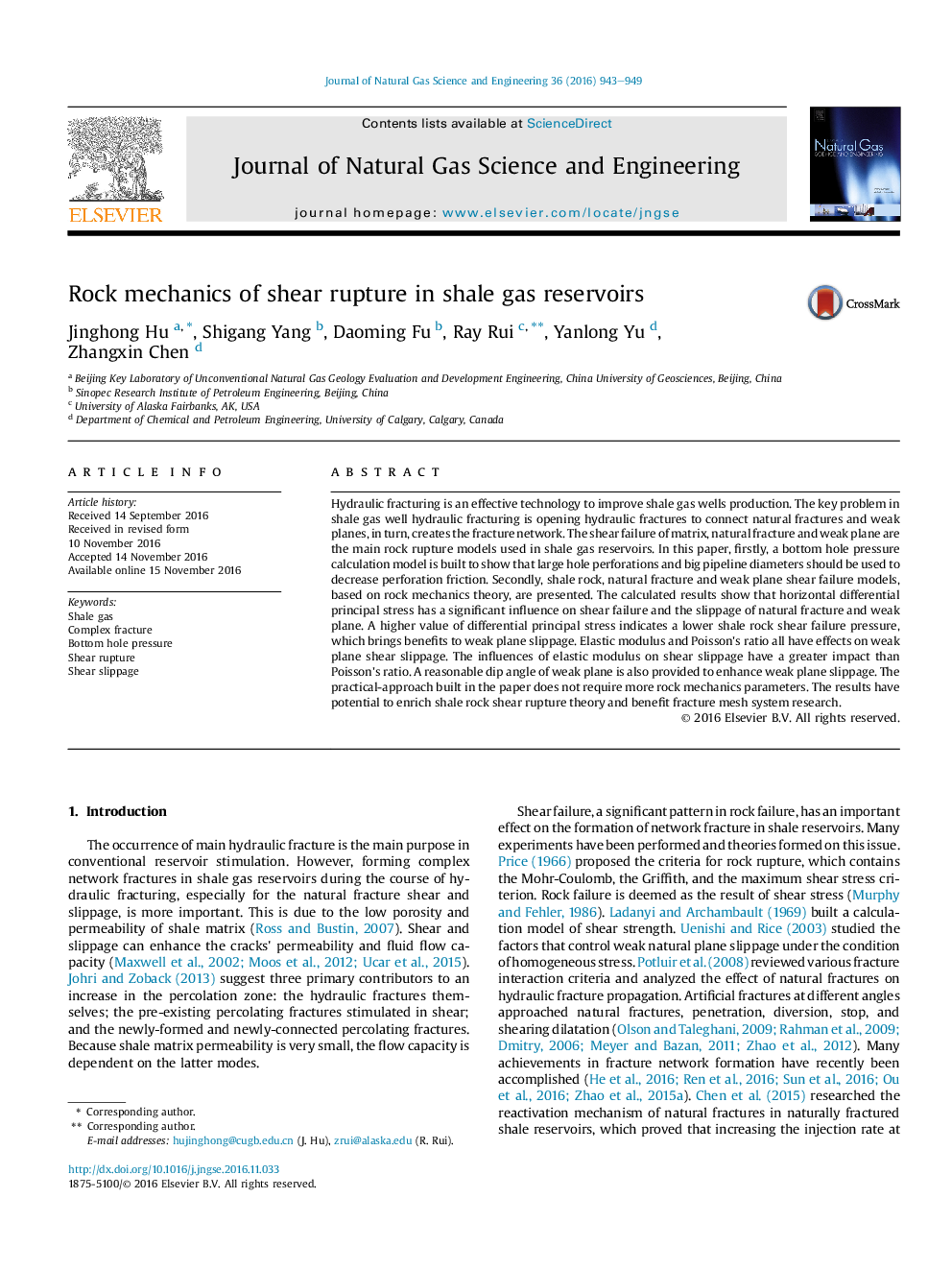| Article ID | Journal | Published Year | Pages | File Type |
|---|---|---|---|---|
| 5484877 | Journal of Natural Gas Science and Engineering | 2016 | 7 Pages |
Abstract
Hydraulic fracturing is an effective technology to improve shale gas wells production. The key problem in shale gas well hydraulic fracturing is opening hydraulic fractures to connect natural fractures and weak planes, in turn, creates the fracture network. The shear failure of matrix, natural fracture and weak plane are the main rock rupture models used in shale gas reservoirs. In this paper, firstly, a bottom hole pressure calculation model is built to show that large hole perforations and big pipeline diameters should be used to decrease perforation friction. Secondly, shale rock, natural fracture and weak plane shear failure models, based on rock mechanics theory, are presented. The calculated results show that horizontal differential principal stress has a significant influence on shear failure and the slippage of natural fracture and weak plane. A higher value of differential principal stress indicates a lower shale rock shear failure pressure, which brings benefits to weak plane slippage. Elastic modulus and Poisson's ratio all have effects on weak plane shear slippage. The influences of elastic modulus on shear slippage have a greater impact than Poisson's ratio. A reasonable dip angle of weak plane is also provided to enhance weak plane slippage. The practical-approach built in the paper does not require more rock mechanics parameters. The results have potential to enrich shale rock shear rupture theory and benefit fracture mesh system research.
Related Topics
Physical Sciences and Engineering
Earth and Planetary Sciences
Earth and Planetary Sciences (General)
Authors
Jinghong Hu, Shigang Yang, Daoming Fu, Ray Rui, Yanlong Yu, Zhangxin Chen,
